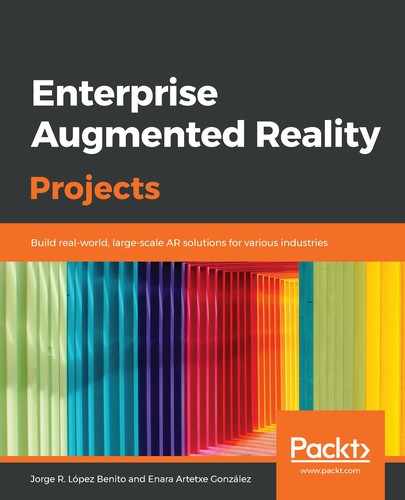Apple launched the first version of ARKit in 2017, along with Xcode 9 and iOS 11, to bring AR to iOS devices. The framework, which is included in Xcode, lets users place virtual content in the real world. Months after its official release, it added new features such as 2D image detection and face detection. In 2018, with the iOS 12 release, ARKit 2 was launched with new features such as 3D object tracking, adding realistic textures to the scenes, and creating multiuser AR experiences. At the time of writing this book, the latest version is iOS 13, with ARKit 3 promising a huge improvement on the current state as it will add a new way of interacting with virtual elements, such as hiding virtual objects when a person is detected in front of them. It also allows users to interact with 3D objects via gestures and capture not only facial expressions but the body motions of a person.
Now that we are acquainted with the main AR tools we will use throughout this book, let's look at how we will apply this software to different enterprise fields.
